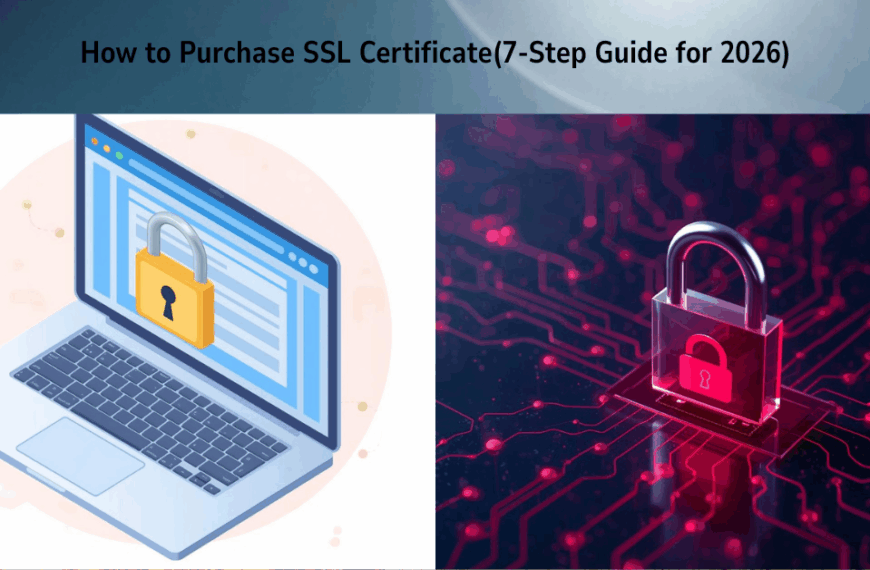Last updated on November 23rd, 2025 at 08:05 pm

AI stealing content has become one of the biggest headaches for UK content creators in 2025. Whether you’re a student publishing research, a blogger sharing your thoughts, or a professional writer crafting articles, your work might be getting scraped without your permission.
The reality is pretty serious– AI systems are constantly crawling the web, gobbling up content to train their models. Your carefully crafted blog post could end up being repeated by an AI without you ever knowing.
But here’s the good news: you don’t have to sit there helplessly watching your content get pinched.
Before we jump into the solutions, let me mention that if you’re looking for reliable hosting that includes built-in content protection features, TrueHostUK offers excellent security measures that complement the strategies we’ll discuss here.
Why AI Content Scraping Matters More Than Ever

Think about it this way – every piece of content you create has value. When AI systems scrape your work without permission, they’re essentially taking your intellectual property and using it for their own purposes. For UK creators, this isn’t just annoying; it’s potentially damaging to your livelihood.
The scraping problem has exploded since ChatGPT launched. Major tech companies are now racing to train bigger, better AI models, and they need massive amounts of data to do it. Unfortunately, they’re not always asking permission first.
1. Cloudflare’s AI Bot Blocker: Your First Line of Defence

Here’s where things get interesting. Cloudflare has rolled out specific tools to tackle AI stealing content, and they’re pretty effective. Millions of websites have already started using Cloudflare’s AI blocker.
Their AI bot blocker can identify and block known AI crawlers before they even reach your site.
Setting this up is surprisingly straightforward. Once you’ve got Cloudflare protecting your site, you can configure their bot management system to block specific AI scrapers. The system recognises patterns typical of AI training bots and stops them in their tracks.
What makes this particularly useful for UK content creators is that Cloudflare’s servers are distributed globally, including several locations across the UK. This means faster response times and better protection for your local audience.
If you are an aspiring content creator and worried where to start your content journey and ensure its safety, Truehost UK is here. Through our website builder, domain search and hosting services will get you going.
Your WordPress website will be compatible with Cloudflare hence simply install the pluggin and setup the restrictions you need.
How to Configure Cloudflare’s Protection
| Feature | Purpose | Effectiveness |
|---|---|---|
| Bot Fight Mode | Blocks malicious bots | High for known crawlers |
| Rate Limiting | Prevents aggressive scraping | Medium to High |
| Firewall Rules | Custom bot blocking | Very High |
| Analytics | Monitor blocked attempts | Essential for tuning |
The beauty of Cloudflare’s approach is that it’s constantly updated. When new AI bots emerge, they’re quickly added to the blocking list. You’re not playing catch-up – you’re staying ahead of the game.
2. Strategic Robots.txt Configuration: The Polite Way to Say No
Now, let’s talk about robots.txt files. Think of these as polite “No Trespassing” signs for web crawlers. While not all bots respect these instructions, many legitimate AI systems do check them first.
You’ll want to add specific directives for major AI crawlers:
User-agent: GPTBot
Disallow: /
User-agent: Google-Extended
Disallow: /
User-agent: CCBot
Disallow: /
User-agent: anthropic-ai
Disallow: /
Here’s the thing though – robots.txt files are more like guidelines than hard rules. Some aggressive scrapers completely ignore them. But for the more respectful AI systems, it’s a clear signal that you don’t want your content used for training.
3. Legal Notices and Terms of Service: Building Your Legal Shield
This is where UK content creators have some real teeth. Under UK copyright law, your content is automatically protected the moment you create it. But you need to make your intentions crystal clear.
Your terms of service should explicitly state that AI scraping is prohibited. Include language like “No part of this content may be used for machine learning, AI training, or automated content generation without explicit written permission.”
Consider adding a copyright notice at the bottom of every page. It might seem old-fashioned, but it establishes clear ownership. Something like “© 2025 [Your Name]. All rights reserved. AI scraping prohibited.”
The UK Intellectual Property Office provides excellent guidance on protecting your digital content rights.
4. Technical Rate Limiting and IP Blocking: Getting Technical

If you’re comfortable with a bit of technical work, rate limiting can be incredibly effective against AI stealing content. Most legitimate human visitors don’t request dozens of pages per minute, but scrapers do.
Set up rules that limit requests to something reasonable – maybe 10 requests per minute per IP address. Anyone exceeding that gets temporarily blocked. It’s like having a bouncer at your website’s front door.
For UK-based sites, you might want to be more lenient with IP addresses from major UK ISPs (BT, Sky, Virgin Media) while being stricter with cloud hosting providers where many scrapers operate.
Common Scraper IP Ranges to Watch
- Cloud hosting providers (AWS, Google Cloud, Azure)
- Data center IP ranges
- Known VPN exit nodes
- Residential proxy networks
5. Content Protection Through Authentication
Here’s a strategy that’s gaining traction among UK bloggers and writers – putting some of your content behind a simple registration wall. You don’t need to charge money; just require an email address.
This approach works because most AI scrapers are looking for easily accessible content. If they have to fill out forms or solve CAPTCHAs, they’ll usually move on to easier targets.
The beauty of this approach is that it doesn’t hurt your genuine readers much. A quick signup process is a small price to pay for quality content. Plus, you’re building an email list in the process.
For UK content creators, this is particularly smart because it helps you build a direct relationship with your audience. You’re not just hoping they’ll find you through search engines – you’ve got their contact details.
6. Content Obfuscation Techniques
This is where we get a bit creative. Content obfuscation involves making your content harder for automated systems to scrape while keeping it perfectly readable for humans.
One technique is loading critical content dynamically with JavaScript. Scrapers often don’t execute JavaScript, so they’ll miss your main content. Another approach is using CSS to style text in ways that confuse scrapers but look normal to visitors.
You can also convert important text to images – though this isn’t great for SEO, so use it sparingly. Maybe for quotes or key takeaways that you really don’t want scraped.
If you’re using TrueHost UK for hosting, their servers support these advanced protection techniques without affecting your site’s performance.
Simple Obfuscation Techniques
- CSS-based text styling that confuses scrapers
- Dynamic content loading
- Text-to-image conversion for sensitive content
- Watermarking your images
- Using unusual HTML structures
7. Monitor and Respond
The final piece of the puzzle is monitoring. You need to know when your content is being stolen so you can take action. Set up Google Alerts for unique phrases from your content. If they appear elsewhere, you’ll know about it.
There are also specialised tools like Copyscape that can help you track down content thieves. Some UK content creators use these tools weekly to check for unauthorised use.
When you do find your content being used without permission, don’t just get angry – get even. Send DMCA takedown notices. Contact the hosting provider. Most legitimate companies will respond quickly to copyright complaints.
UK-Specific Considerations for Content Protection
As a UK content creator, you’ve got some specific advantages. The UK has strong copyright laws that protect your work automatically. You don’t need to register copyright – it exists the moment you create something original.
The UK’s data protection laws (UK GDPR) also provide some protection against unauthorised data scraping. If someone’s scraping your content on an industrial scale, they might be violating these regulations.
Consider reaching out to the Federation Against Copyright Theft if you’re dealing with serious content theft. They can provide guidance on enforcement actions.
Putting It All Together
Here’s the thing about preventing AI stealing content – no single method is foolproof. The most effective approach combines several strategies:
- Start with Cloudflare – It’s your first line of defence
- Configure your robots.txt – Be polite but firm
- Add legal notices – Make your intentions clear
- Implement rate limiting – Slow down the scrapers
- Consider authentication – For your most valuable content
- Use obfuscation – Make scraping harder
- Monitor and respond – Stay vigilant
The goal isn’t to make your site impenetrable – it’s to make scraping your content more trouble than it’s worth. Scrapers will usually move on to easier targets.
Remember, this is an ongoing battle. AI scrapers are getting more sophisticated, but so are the protection methods. Stay informed about new threats and new defences.
Taking Action
Don’t wait until you discover your content has been scraped. Start implementing these protections today. Begin with the easier steps like updating your robots.txt file and adding copyright notices, then work your way up to more technical solutions.
The fight against AI content theft isn’t just about protecting your work – it’s about preserving the value of human creativity in an increasingly automated world. Your content matters, and it deserves protection.
What are you waiting for? Your content won’t protect itself.
Read Also: 10 AI Detector Tools That Actually Work And Humanising Content
 Domain Search
Domain Search Whois Lookup
Whois Lookup Domain Transfer
Domain Transfer All Domains
All Domains Web Hosting
Web Hosting Email Hosting
Email Hosting Reseller Hosting
Reseller Hosting Windows Hosting
Windows Hosting cPanel Hosting
cPanel Hosting VPS Hosting
VPS Hosting Managed VPS Hosting
Managed VPS Hosting Dedicated Server
Dedicated Server SSL Certificates
SSL Certificates All SSL
All SSL


